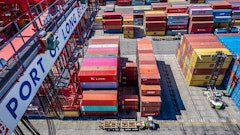
Managing a reliable and robust supply base is a key priority for global organizations looking to maximize supply chain efficiency and customer availability. Ensuring suppliers have timely visibility of your requirements and can align their operations to optimize the flow of product supply can drive significant efficiencies for both parties. These savings can be realized through reduction in administration costs, inventory levels and working capital investment, while offering improved visibility, control and agility.
So how does the supply chain leader continually align supply to the real demand and deliver this business value? Stryker Osteosynthesis provides a striking example of how one leading company has implemented new capabilities to manage its supply base and ensure supply is aligned to demand.
Challenges
Stryker Osteosynthesis is a provider of reconstructive, trauma and spinal products in the medical technology industry. Since 1941, Stryker has grown to a position of global leadership in the $35.6 billion orthopedic market, providing a range of products that improve medical professionals' and patients' lives in more than 120 countries.
Due to volatility in demand, issues with inventory quality and delays in product availability, Stryker was struggling to ensure that its products would be available when needed. In the healthcare field, it is essential for medical professionals to have instant access to supplies. Having a patient wait for an implant that is out of stock, for example, could be life-threatening.
From Stryker's distribution centers to the end hospitals, Stryker's customers expect high, 24/7 service levels on practically all product offerings. Given the nature of this demand, a key supply chain challenge Stryker faced involved conflicting goals among high service levels and low inventory levels. Essentially, Stryker must continually ensure that inventory is neither in excess nor out of stock.
Such a business-dependent mandate, however, proves difficult to fulfill without strong visibility along the supply chain. Without deep supply chain visibility and without knowing the exact number of products in distribution and in the supply chain, Stryker was unable to optimize its operational effectiveness and efficiencies.
Specifically, Stryker encountered the bullwhip effect, which stems from incorrect forecasts and which created additional supply chain challenges. With numerous links in its supply chain, Stryker needed a way to address the demand variability that risked potential inventory excess or stockouts.
Moreover, Stryker's operational efficiency suffered from inconsistent inbound/outbound performance and manufacturing loads, hindering the company's ability to operate a stable, uniform-capacity load required for optimized process efficiencies. Stryker felt increasing pressure from manufacturing and supply chain costs, ultimately affecting the company's bottom line.
Solution
After initially discussing the adoption of a vendor-managed inventory (VMI) project, Stryker first thoroughly reviewed its supply chain to determine which parts would benefit from a VMI tool. Upon assessing its extensive supply chain, Stryker decided to start at the beginning of the supply chain, focusing more on the company's suppliers and distribution centers and less on its branches and the end customers.
Stryker evaluated several prospective VMI tools, and ultimately decided that partnering with TradeBeam and its i-Supply inventory management solution was the best choice due to its real-time visibility and single tool/view offering.
CDC TradeBeam is a global trade management software and services company, offering solutions to streamline global trading processes for enterprises and their partners. TradeBeam helps companies optimize their global supply chain through increased collaboration with suppliers, supply chain partners and regulatory authorities, improving visibility and reducing the costs and risks associated with international trade.
In 2006, Stryker deployed TradeBeam's i-Supply solution among three production sites, two in Germany and one in Switzerland. These production sites started together with Stryker's distribution center in Japan, enabling the DC to use just one VMI tool to collaborate with the three production sites. Stryker went live with i-Supply with its first supplier in 2007 and added two more suppliers by the year's end.
After implementing i-Supply among two more suppliers in 2008, Stryker decided to spend the following year consolidating the work with its existing partners to help them optimize process efficiencies. Currently, i-Supply is being used among two suppliers in Germany as well as one in each of the United States, Sweden and Switzerland (Figure 1).
Results
Using TradeBeam's i-Supply solution, Stryker has decreased its inventory levels by up to 50 percent. Some supplier sites were able to stabilize their inventory while experiencing a 20 percent increase in demand (Figure 2). For some of the company's products, i-Supply is being used throughout the entire supply chain; certain parts are managed all the way from the supplier, to Stryker's sales staff, to the distribution center. This allows Stryker to purchase parts from the supplier and directly send the same parts via its DCs, resulting in decreased inventory levels and improved service levels along the supply chain, as well as the elimination of stockouts.
By running i-Supply over its entire supply chain coming from Europe for one customer distribution center in Japan, Stryker has strengthened supplier collaboration, improved support among partners and optimized operations along the supply chain. Essentially, using a single, one-language tool has enabled suppliers and customers to have the same basic principles and ultimately simplify supply chain management.
Regarding Stryker's future execution plans, the company plans to focus on its strategic suppliers, double the number of suppliers using i-Supply throughout 2010, and increase the number of products running over i-Supply to more than 75 percent.
TradeBeam's i-Supply solution proved to be exactly what Stryker needed to successfully meet its goals. Since implementing i-Supply, Stryker has increased its service levels among affiliates and end users, reduced inventory levels and improved work flow. Moreover, the company has achieved its overarching goal of realizing cost savings via less obsolescence and planning work as well as fewer administration costs.


























